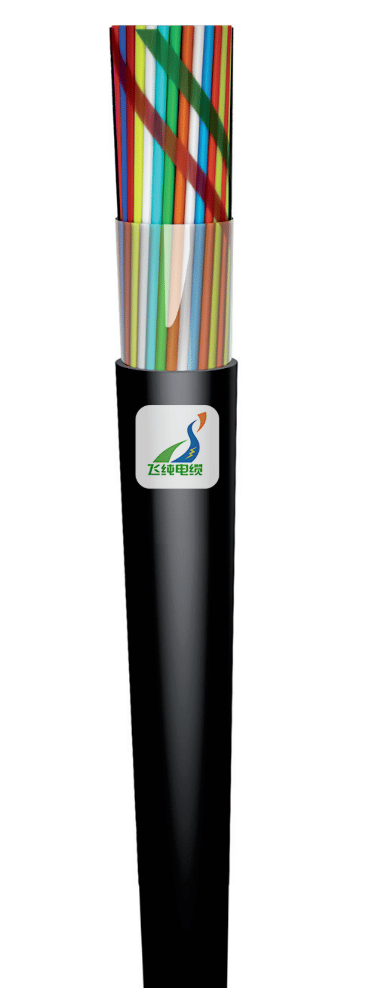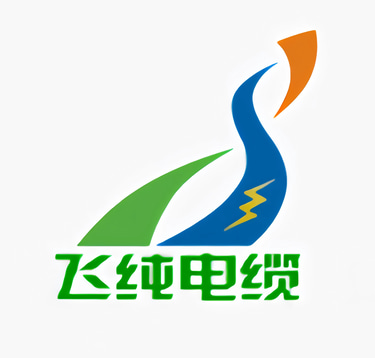Type YnTKGMLY-tex 250 V Telephone mining cable with supporting element
This reinforced communication cable is specially developed and manufactured to meet the stringent requirements of mine telecommunication networks, signal systems and mining equipment, ensuring important communication needs underground.


Type YnTKGMLY-tex cable is a reinforced telephone cable specially designed for the rigorous demands of underground mining environments.
Developed in accordance with the ZN BFK 015:1997 standard (with later amendments) and specification TT1-6397, this cable is engineered to ensure reliable telecommunication, signaling, and connectivity for mining networks and equipment.
Construction
Conductors:
The cable employs multi-strand, tinned copper conductors (Class 2) with a diameter of 0.8 mm. These conductors are built for durability and excellent electrical performance in harsh environments.Insulation:
Each conductor is insulated using high-performance polwinit, a specialized PVC compound that offers superior flame-retardant properties and mechanical protection.Bundling and Identification:
Pair Bundles:
In configurations where conductors are twisted into pairs, the transmission paths are formed by conductors labeled “a” and “b.” For these pairs, the “a” conductor typically remains in its natural color, while the “b” conductor is color-coded (e.g., blue, yellow, green, black, red) to facilitate easy identification.Quadruple Bundles:
For cables that require quadruple bundling, conductors are grouped as “a,” “b,” “c,” and “d.” For example, one such bundle is identified as: a – natural, b – blue, c – natural, and d – yellow.Core Assembly:
The insulated conductors are twisted together in co-axial layers around a central supporting element made of polypropylene cord. This supporting element not only aligns the bundles but also provides mechanical strength.
Moisture Protection:
A laminated aluminum foil barrier is integrated within the cable as a damp-proof layer. This barrier protects the internal components from moisture ingress, a critical factor in damp underground conditions.Outer Coating:
The final external layer is a flame-retardant polwinit jacket with an oxygen index of 29, ensuring that the cable resists flame spread. The jacket is uniformly black (RAL 9005), offering both aesthetic consistency and long-term durability.Standard Length and Packaging:
Standard lengths available are 500 or 1000 meters, typically supplied on drums. Custom lengths and packaging options can be arranged based on project requirements.
Key Electrical and Mechanical Characteristics
Electrical Performance:
Maximum Conductor Resistance: 36.7 Ω/km at 20°C
Minimum Insulation Resistance: 10 MΩ×km at 20°C
Effective Capacitance: 75 µF/km (measured at 800 Hz)
These parameters ensure minimal signal loss and high-quality transmission over long cable runs.
Mechanical Strength:
Breaking Force:
90 dN for cables with a conductor configuration of 1x4x0.5 mm²
220 dN for cables with a configuration of 5x2x0.5 mm²
Allowable Sag (Without Support):
210 m for 1x4x0.5 mm² cables
300 m for 5x2x0.5 mm² cables
Minimum Bending Radius:
The cable must not be bent to less than 7.5 times its external diameter (7.5D), ensuring flexibility during installation without risking damage.
Temperature Ranges:
Installation Temperature: 0°C to +50°C
Operating Temperature: –30°C to +70°C
This wide temperature range ensures reliable performance even under extreme underground conditions.
Applications
The Type YnTKGMLY-tex cable is intended for:
Telephone Networks:
Ideal for constructing and maintaining robust telephone networks in mining installations, both at the surface and within underground workings.Signal Systems:
Supports critical signaling functions for safety and operational control in mining environments.Mining Equipment:
Provides essential communication links for various pieces of mining equipment, ensuring uninterrupted connectivity and control.
Conductor Configurations
The cable is available in different conductor configurations to meet various capacity and performance requirements. For example:
1x4x0.5 Configuration:
Comprises a single conductor made of 4 strands (each 0.5 mm²), typically built with 7 strands of 0.3 mm diameter.
Typical dimensions:
Insulation thickness: ~0.7 mm
Outer jacket thickness: ~1.2 mm
Approximate cable diameter: 8.0 mm
Cable weight: 85 kg/km
5x2x0.5 Configuration:
Consists of five conductors, each with 2 strands of 0.5 mm², constructed similarly with 7 strands of 0.3 mm diameter.
Typical dimensions:
Insulation thickness: ~0.7 mm
Outer jacket thickness: ~1.2 mm
Approximate cable diameter: 16.2 mm
Cable weight: 217 kg/km
These configurations allow the cable to be selected based on the specific communication load and environmental requirements of the mining project.
Summary
The Type YnTKGMLY-tex 250 V Telephone Mining Cable with Supporting Element is a robust, flame-retardant, and moisture-resistant solution tailored for the demanding conditions of underground mining. With its advanced conductor bundling, precise color identification, and reinforced construction around a polypropylene supporting element, it meets stringent performance standards for telephone networks, signal systems, and mining equipment connectivity.
Its superior electrical and mechanical properties ensure reliable, long-term operation in challenging environments, making it an essential component of modern mining communication systems.

Frequently Asked Questions (FAQ)
Q: What is the Type YnTKGMLY-tex 250 V Telephone Mining Cable?
A: It is a reinforced telephone cable specifically designed for underground mining applications, ensuring reliable communication for telephony, signaling, and mining equipment.Q: What standard does this cable comply with?
A: It is manufactured according to the ZN BFK 015:1997 standard (with later amendments) and meets specification TT1-6397.Q: What voltage is this cable designed for?
A: This cable is designed for 250 V telephone systems used in mining applications.Q: What type of conductor does the cable use?
A: It uses multi-strand, tinned copper conductors (Class 2) with a diameter of 0.8 mm.Q: What insulation material is used on the conductors?
A: The conductors are insulated with polwinit, a high-performance PVC compound known for its flame-retardant properties.Q: How are the conductors arranged in the cable?
A: The conductors are grouped into bundles, either twisted into pairs or into star-shaped quadruple bundles, forming distinct transmission paths.Q: How are the conductor bundles identified?
A: Each bundle is identified by standardized color coding. For pair bundles, conductors are marked as “a” and “b” (with “a” typically natural and “b” in colors like blue, yellow, green, black, or red). Quadruple bundles include conductors labeled “a,” “b,” “c,” and “d.”Q: What is the purpose of using twisted bundles in this cable?
A: Twisting helps minimize electromagnetic interference and ensures balanced signal transmission in underground networks.Q: What role does the supporting element play in the cable?
A: A polypropylene cord acts as a supporting element, providing mechanical strength and alignment for the twisted bundles.Q: What filler is used in the cable construction?
A: The cable incorporates a gel filler that maintains the cable’s shape and protects internal components from mechanical stress.Q: How does the cable protect against moisture?
A: A laminated aluminum foil barrier is used as a damp-proof seal, preventing moisture ingress in the damp underground environment.Q: What material is used for the outer jacket?
A: The outer jacket is made of flame-retardant polwinit, ensuring fire resistance.Q: What is the color of the outer jacket?
A: The outer jacket is uniformly black, meeting the RAL 9005 standard.Q: What are the standard lengths available for this cable?
A: Standard cable lengths are 500 or 1000 meters, with custom lengths available upon request.Q: How is the cable packaged?
A: It is typically supplied on drums, though alternative packaging options can be arranged.Q: What is the maximum conductor resistance at 20°C?
A: The maximum conductor resistance is specified as 36.7 Ω/km.Q: What is the minimum insulation resistance of the cable?
A: The cable has a minimum insulation resistance of 10 MΩ×km at 20°C.Q: What is the effective capacitance of the transmission path?
A: The effective capacitance is approximately 75 µF/km (measured at 800 Hz).Q: What is the minimum bending radius of the cable?
A: The cable must be bent to no less than 7.5 times its external diameter (7.5D) to prevent damage.Q: What is the installation temperature range for this cable?
A: The cable can be installed in temperatures ranging from 0°C to +50°C.Q: What is the operating temperature range?
A: It operates reliably between –30°C and +70°C.Q: For which applications is this cable designed?
A: It is intended for telephone networks, signaling systems, and communications in both surface and underground mining installations.Q: How does the cable support mine telecommunication networks?
A: Its robust construction, moisture resistance, and flame-retardant features ensure uninterrupted communication in harsh mining environments.Q: What are the mechanical strength requirements of this cable?
A: It is designed with a minimum breaking force of 90 dN for a 1x4x0.5 mm² configuration and 220 dN for a 5x2x0.5 mm² configuration.Q: What is the allowable cable sag without support?
A: The cable is designed to limit sag in unsupported spans, ensuring reliable performance over long distances.Q: How does the cable's flame-retardant property benefit mining applications?
A: The flame-retardant outer jacket helps prevent fire spread, which is critical in the explosive and fire-prone environments of mines.Q: How does the polypropylene supporting element improve cable performance?
A: It reinforces the cable structure, maintaining conductor alignment and enhancing overall mechanical strength.Q: What benefits does the gel filler provide?
A: The gel filler stabilizes the cable's internal structure and reduces the impact of mechanical stresses during installation and operation.Q: How does the laminated aluminum foil barrier function?
A: It acts as an effective damp-proof seal, keeping moisture away from the internal components and preserving cable integrity.Q: How does the cable ensure clear telephone communication underground?
A: Its optimized electrical properties and robust construction minimize signal loss and interference, ensuring high-quality voice transmission.Q: Is the cable suitable for both surface and underground installations?
A: Yes, it is versatile enough for use in surface telephone networks as well as in the challenging conditions of underground mining.Q: What kind of environments can the cable withstand?
A: It is designed to perform reliably in damp, dusty, and mechanically demanding mining environments.Q: How does the cable contribute to overall mine safety?
A: By ensuring reliable communication and signaling, the cable plays a crucial role in maintaining operational safety and coordination in mines.Q: Are there different conductor configurations available?
A: Yes, common configurations include 1x4x0.5 and 5x2x0.5, each tailored to different communication load requirements.Q: What are the approximate dimensions of the 1x4x0.5 configuration?
A: It typically features an insulation thickness of about 0.7 mm, an outer jacket thickness of approximately 1.2 mm, an overall diameter of around 8.0 mm, and a cable weight of about 85 kg/km.Q: What are the dimensions for the 5x2x0.5 configuration?
A: The 5x2x0.5 configuration generally has similar insulation and jacket thicknesses, with an overall diameter of about 16.2 mm and a weight of roughly 217 kg/km.Q: Is the cable RoHS compliant?
A: Yes, it is designed in accordance with RoHS standards, ensuring environmentally friendly materials are used.Q: How does this cable enhance communication reliability in mining?
A: Its robust construction, moisture and flame resistance, and precise conductor arrangement ensure minimal signal loss and high transmission quality even in adverse conditions.Q: What maintenance practices are recommended for this cable?
A: Regular inspections for physical damage, moisture ingress, and adherence to proper bending and temperature guidelines will help maintain its long-term performance.Q: Why is this cable a critical component in mining communication systems?
A: It is engineered to meet the rigorous demands of underground environments, ensuring continuous, high-quality telephone communication and signaling, which are essential for safe and efficient mining operations.






Type YnTKGMLY-tex 250 V Telephone Mining Cable with Supporting Element
A high-performance, reinforced cable engineered for reliable underground telephone and signaling networks in mining environments. Designed to meet strict industry standards (ZN BFK 015:1997, TT1-6397), this cable features multi-strand tinned copper conductors insulated with flame-retardant polwinit. The conductors are organized into color-coded twisted pairs or quadruple bundles, all supported by a durable polypropylene cord that enhances mechanical strength. With a gel filler for stability and a laminated aluminum foil barrier providing moisture protection, the cable is built to withstand the harsh conditions of underground mines. Its robust construction, combined with a flame-retardant outer jacket in sleek black (RAL 9005), ensures excellent electrical performance and durability. Ideal for mine telephone systems, signaling applications, and mining equipment communications, this cable offers reliable, long-lasting connectivity while maintaining high safety and performance standards.
6/30/20218 min read
